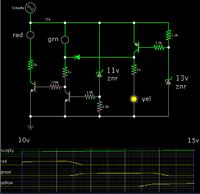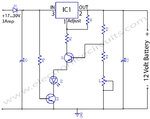rajaram04
Advanced Member level 3
Hello Sir
I have 3 batteries each of 4 volts 1 amp 1.0 Ah & combining all them in series to make an output of 12 volts
Other info labelled on battery :-
Standby use : 4.70 v - 4.90 v
Cycle use : 5.00 v - 5.20 v
Maximum charching current 0.21 A
Sealed lead acid
Now i want to make circuits for the indications of
1.over discharge (due to overload etc)
2.Normal discharge (due to usage)
3.charge complete (While charging)
please help in designing a single or multi circuits for the combination
Too please tell that is if its a good idea to combine all 3 batteries in that way ??
I searched indicators in google but very proper circuits are available for
6 Volt 4.5 Ah Sealed Lead Acid Rechargeable Battery
so . . . .
I have 3 batteries each of 4 volts 1 amp 1.0 Ah & combining all them in series to make an output of 12 volts
Other info labelled on battery :-
Standby use : 4.70 v - 4.90 v
Cycle use : 5.00 v - 5.20 v
Maximum charching current 0.21 A
Sealed lead acid
Now i want to make circuits for the indications of
1.over discharge (due to overload etc)
2.Normal discharge (due to usage)
3.charge complete (While charging)
please help in designing a single or multi circuits for the combination
Too please tell that is if its a good idea to combine all 3 batteries in that way ??
I searched indicators in google but very proper circuits are available for
6 Volt 4.5 Ah Sealed Lead Acid Rechargeable Battery
so . . . .




